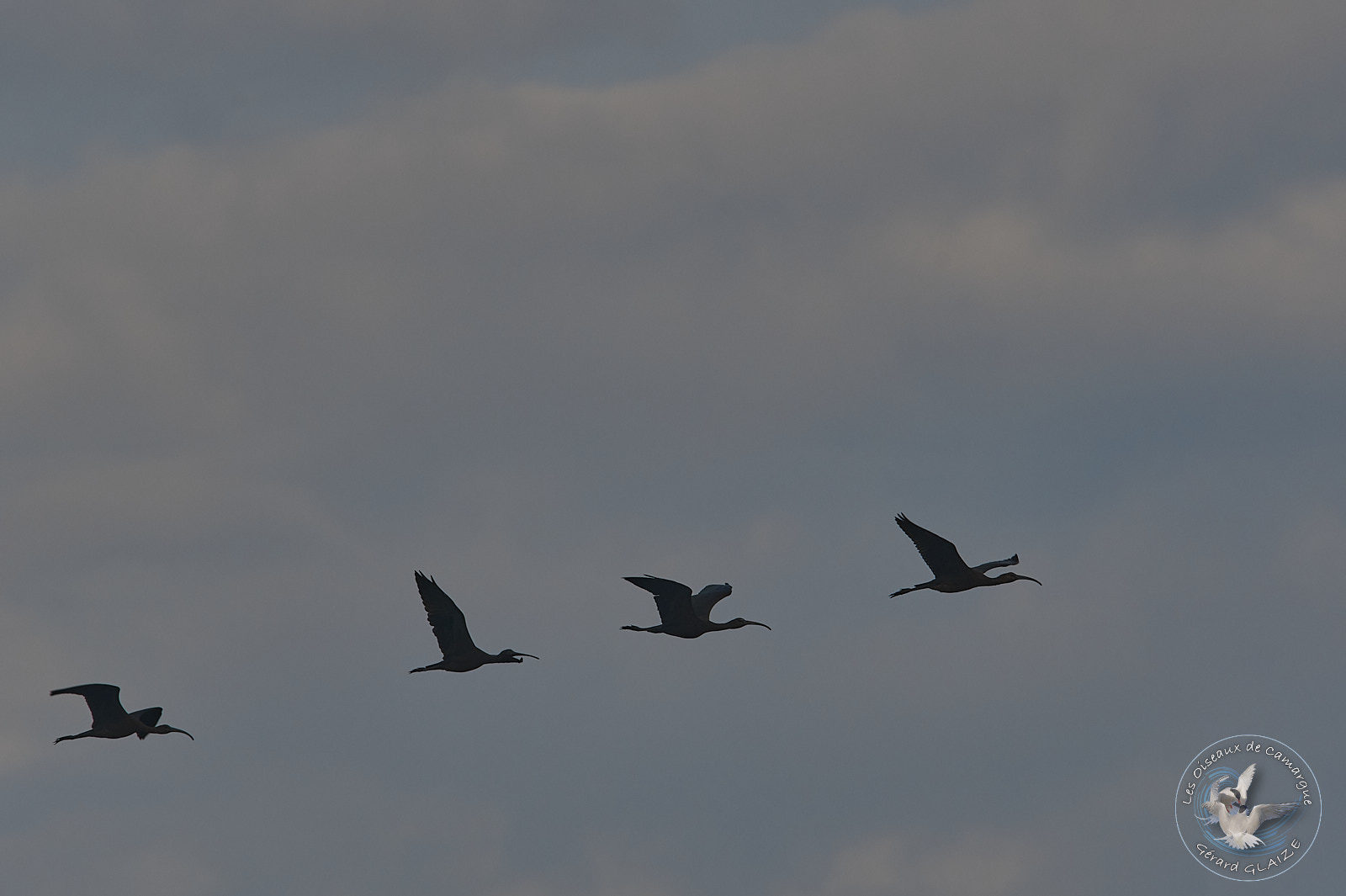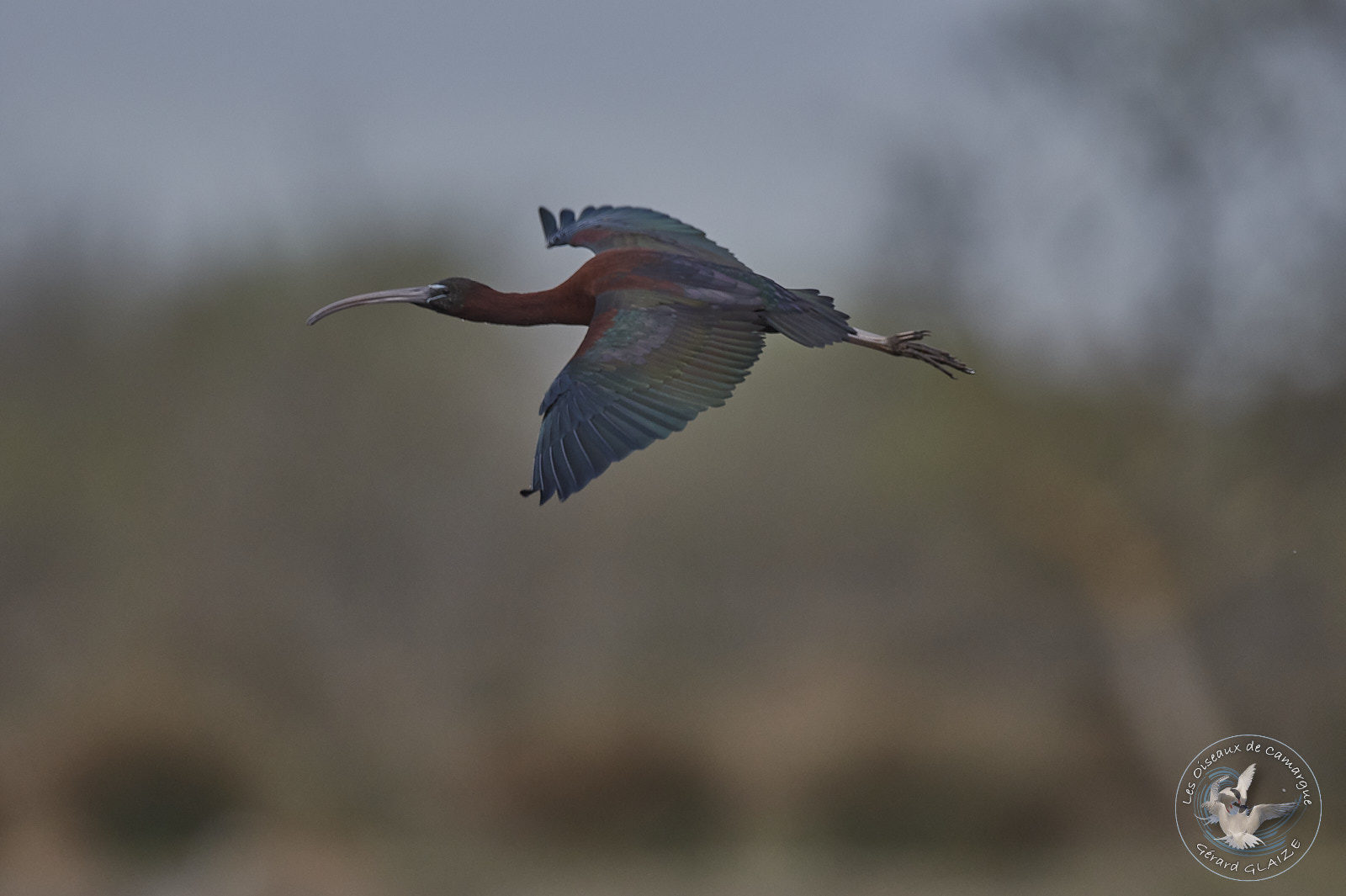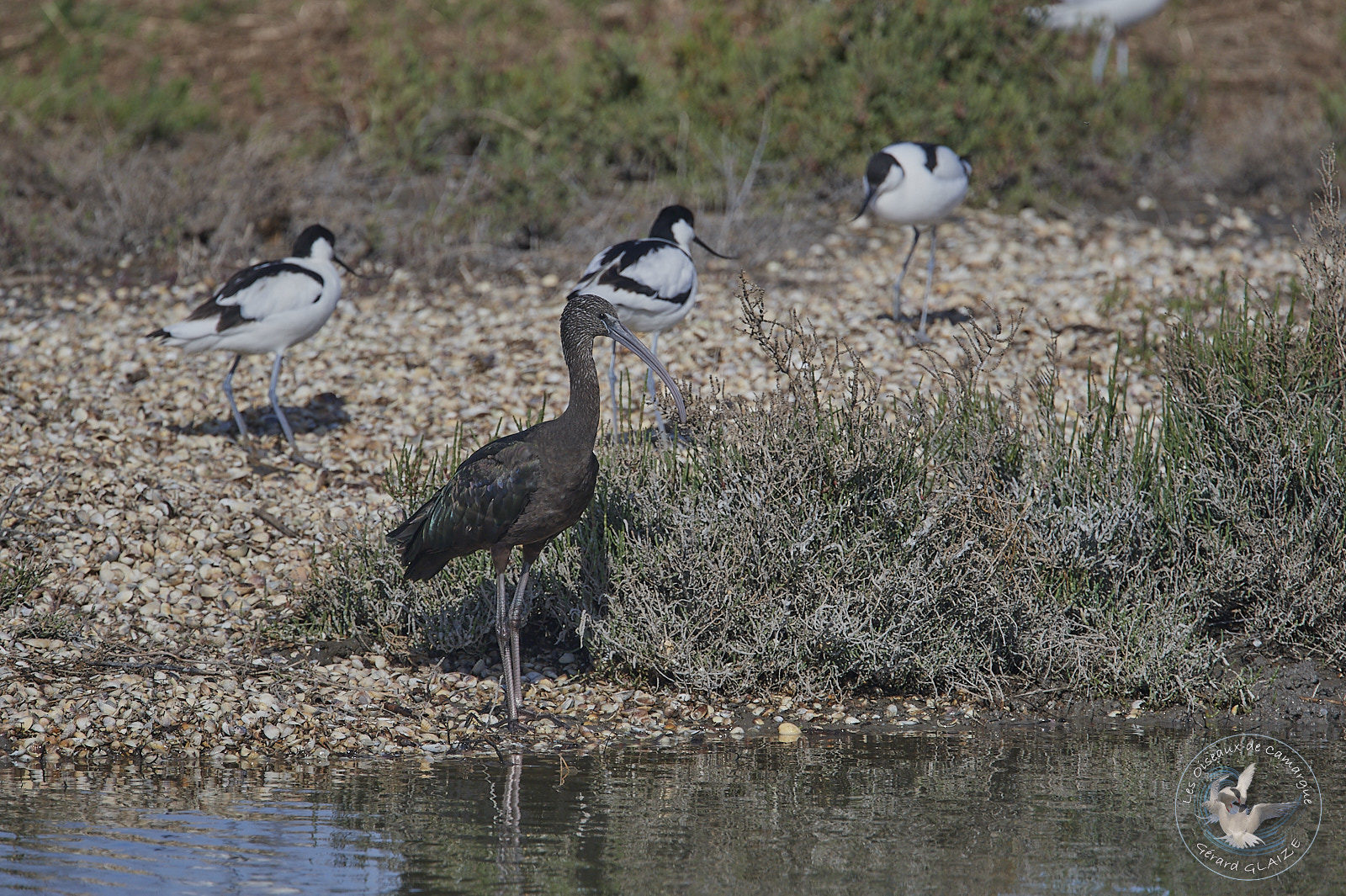Glossy Ibis
Glossy Ibis is a species of bird in the Threskiornithidae family. At first glance it appears black, but it has rust colored feathers with metallic green tints. Head and neck are paler. He has no feathers around his eyes. It has a pale blue line decorating the contours of the face. In breeding plumage, the species shows thin white streaks on head and neck. There is no sexual dimorphism in this bird.
Glossy Ibis
Scientific name: Plegadis falcinellus
Family : Threskiornithidae
Length: from 56 cm to 65 cm – Wingspan: from 80 cm to 95 cm
Weight: from 500 gr to 800 gr
IUCN Conservation Status: LC
Flight
The Glossy Ibis’ silhouette is typical in flight: entirely dark body, long legs and elongated neck, long curved beak, broad wings. The wing beats are ample, rapid and performed alternately with glides.
Habitat
The Glossy Ibis is typically a wetland species. It frequents marshes, the edges of ponds, wet or flooded meadows, the edges of rivers or rivers, deltas, rice fields, etc.
Regime – Diet
Glossy ibis uses its large beak to forage in the mud. It thus feeds on larvae and imagos of aquatic insects, dragonflies, locusts and grasshoppers, worms, leeches, various molluscs, mussels and crustaceans. He also does not disdain small vertebrates like fish, amphibians, lizards and small snakes. The Glossy Ibis captures its prey in shallow water, on land, in mud or on the water surface.
Nesting
It usually nests above water, in dense vegetation such as willows or emergent reeds, or in small trees or shrubs near water. It may form mixed colonies when nesting, often with herons, spoonbills and cormorants.
The ibis builds a nest from thin branches. Between May and July the female lays 3 or 4 deep gray-blue eggs. there is only one nesting per year. The incubation lasts 3 weeks. The young can fly after a month and a half.
Protection
The glossy ibis benefits from total protection on French territory since the ministerial decree of April 17, 1981 relating to birds protected throughout the territory. It is listed in Annex I of the Birds Directive of the European Union. It is therefore prohibited to destroy, mutilate, capture or remove it, to intentionally disturb or naturalize it, as well as to destroy or remove eggs and nests and to destroy, alter or degrade their environment.
Other
The year 2006 was marked by the reproduction of 14 couples of Ibis falcinelle in the regional nature reserve of scamandre in the Camargue Gardoise (also called the little Camargue). This population has increased exponentially, reaching 365 couples in 2012.
Cry
Other Links
- You can see the article from my site “Birds of Camargue” for more information on the Camargue and the Birds.


































